SEEKING THE NOTHING
"And those who were seen dancing were thought to be insane by those who could not hear the music."
Project on hold for an RPG/Visual Novel game.
Check these sections or my main account for more information about it.
⟡
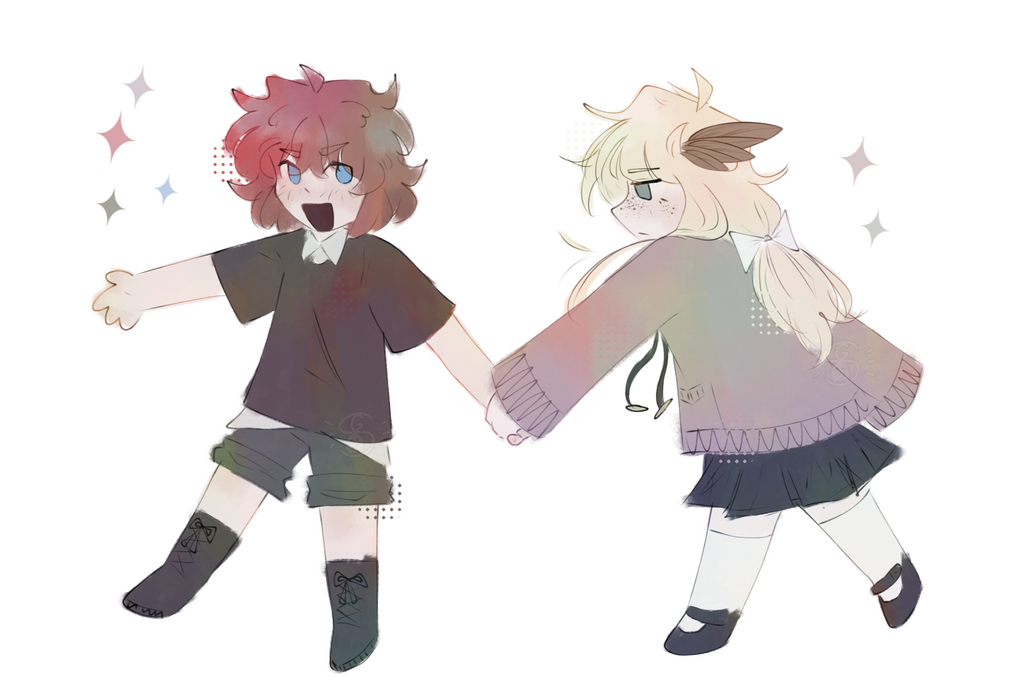
Plot info
The story aims to present the perspective of several individuals who, due to the social dystopian context and the ongoing war they live in, find their thoughts and decisions to be highly polarized and coerced. Among them are the two protagonists, Kriss and Kyo, who, despite seeming completely opposite, appear to be pursuing similar goals.Throughout the game, the story unfolds in two ways: through the books written by Kriss and the reality of his day-to-day life, together forming a complete picture of what truly happens.

The main characters are forced to participate in a military activity. The entire story unfolds with a blend of the grim reality that everyone can objectively see and the absurd, manipulated fiction created by those attempting to censor it all. Therefore, it’s no surprise that a sense of normalization, or even a sinister humor, emerges amidst all the despair.
Main characters
The characters have different designs depending on how the story is told. For now, only the designs from Kriss' books are showcased here.
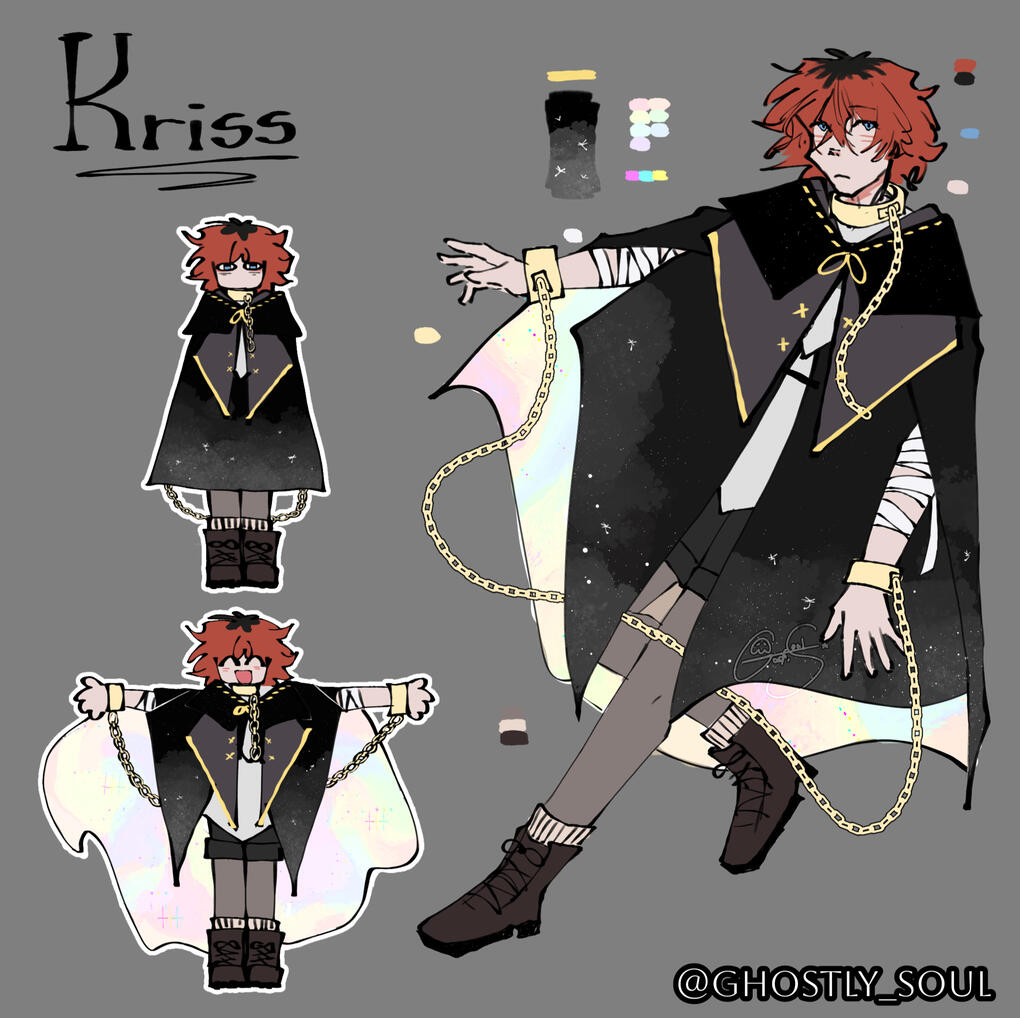
Kriss is a prisoner who writes books and stories where life is different, just like the people he lives with. He is "saved" for the second time by Kyo, someone he knew in his childhood and is now reunited with.
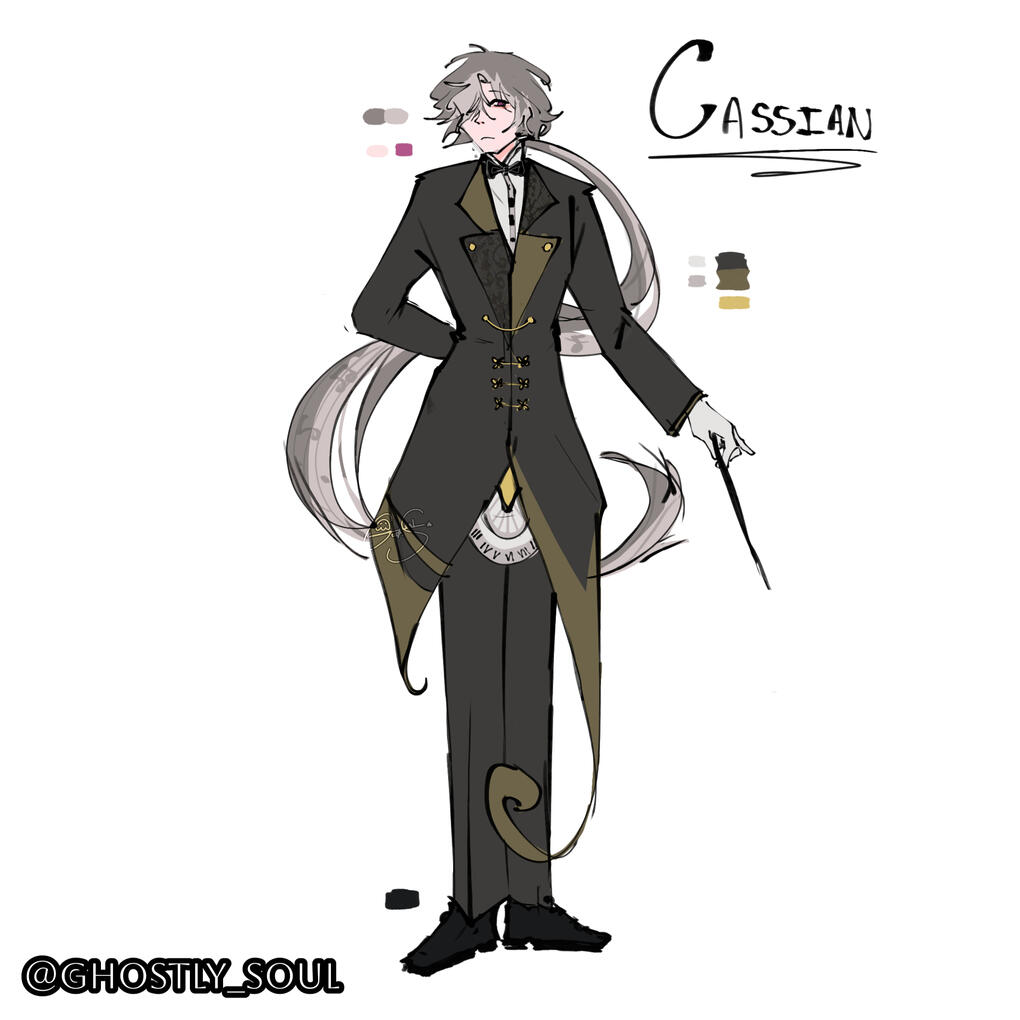
Cassian works as a second lieutenant in the army. Although in Kriss's books, he is described as a musical conductor. He lives under the coercion of his lieutenant and hides his prosopagnosia. He only really has his current position due to the corruption of those who controlled the army at the time, and sadly, Cassian never manages to escape.
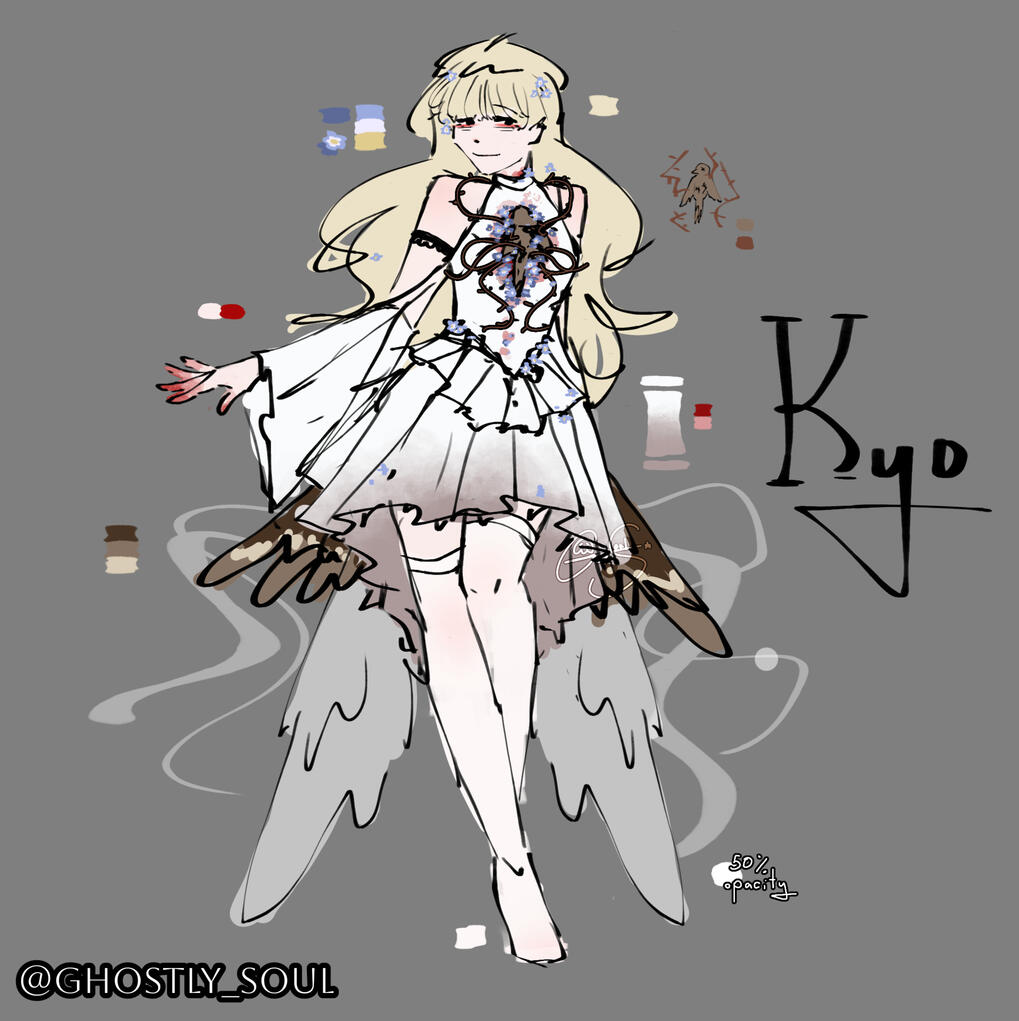
??????????????????
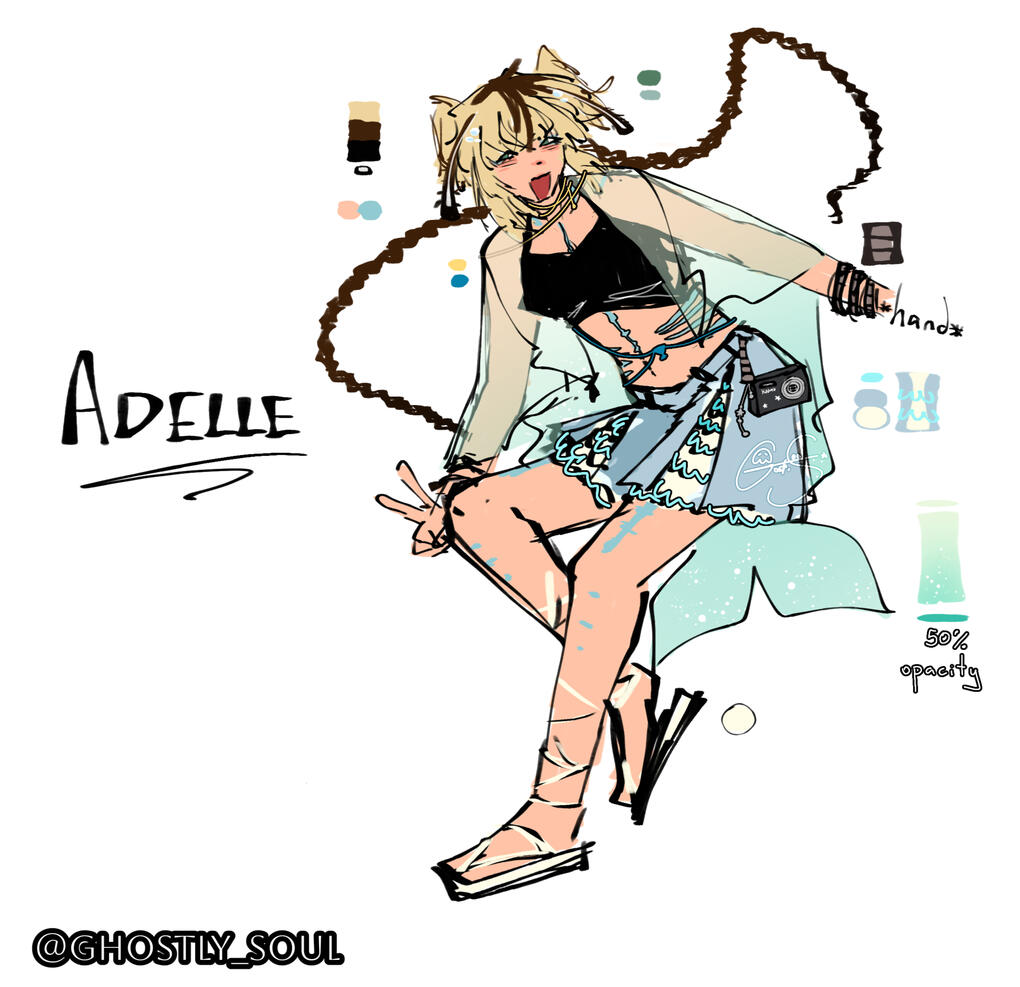
Adelle works at a telephone line exchange and is a war photographer/reporter.
References
The story is still in development; however, it aims to reference real artistic works and address informative topics. So, if you're interested in researching or simply enjoy discovering new things, here I’ll briefly explain some of the themes I’d like to include or have already incorporated into the story.
‣ Science of conductism
Behaviorism is a branch of psychology that focuses on studying how external stimuli in the environment where an individual grows up can shape their actions and thoughts, while disregarding internal stimuli.Behaviorism can be applied to a person who has grown up in an unstable country, at war, or under a dictatorial regime, people might learn to behave in certain ways to avoid punishment or earn rewards. For instance, someone may learn to refrain from speaking openly out of fear of retaliation (negative punishment), or they might behave in a way that grants them access to limited resources or safety (positive reinforcement).
‣ Philosophers
René Descartes and Friedrich Nietzsche are two of the most influential philosophers in history, but their approaches to philosophy and life are profoundly different.For Descartes, reason is the foundation of knowledge and truth, and emotions and passions are seen as potentially dangerous, capable of diverting the individual from the path of reason, which must prevail to achieve true knowledge.
Nietzsche, on the other hand, had a much more complex relationship with emotions. For him, emotions are not an obstacle to progress but an essential part of human life. Nietzsche celebrates life, passion, and drive, and argues that emotions (such as anger, passion, and love) are ways of affirming life, overcoming obstacles, and expressing individuality.
‣ Colors and emotions
Colors not only have a visual impact but can also evoke profound psychological effects. The perception of a color can trigger immediate and subconscious sensations, which vary depending on cultural, personal, and contextual factors.
Throughout the story, the use of color has been intentionally applied, not just to express Kriss’s distorted artistic vision of the world, but also to practically demonstrate how deeply this can affect us all.In real-life, somber and melancholic scenes, the color palette focuses on muted, grayish tones that lack vibrancy, reflecting nothing more than feelings of oppression, sadness, and despair.
Meanwhile, in Kriss’s books, which aim to express a much more absurd and erratic tone, colors are not only vivid but also categorized to reflect every emotion and situation Kriss experiences or how he perceives the people around him.More specifically, Kriss perceives the world in black and white. This not only reflects the polarization and turmoil of his country, but also stems from his belief, shaped by growing up in an environment of violence and fear, that humans are the source of the problem. As a result, anything directly influenced by humans lacks color. The only things that retain their color are the sky and the stars, places untouched by human presence.
Similarly, each character is associated with specific colors that align with Kriss’s perception of them and himself, reflecting the emotions and impressions he attaches to them.